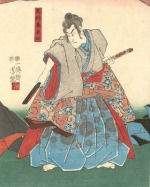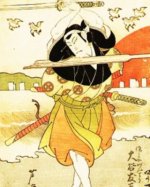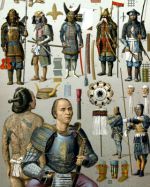The History of Fighting Culture
Best Martial Arts
Best Combat Sports
Best Military History
Fighting Quote
"The fight is won or lost far away from witnesses, behind the lines, in the gym, and out there on the road, long before I dance under those lights".
~ Muhammad Ali ~
~ Muhammad Ali ~
Aikido Culture
The Five Main Styles of Aikido
Though there are many aikido styles practiced in the world today, most aikidoka train in one of the five main systems of the Japanese martial art. These styles vary in how much emphasis is put on the different aikido techniques, training methods and philosophies but all have evolved from the teachings of aikido’s founder, Morihei Ueshiba.
Archery Culture
Mongolian Archery
The history of Mongolian archery dates back for thousands of years and has been used for hunting, sport and warfare. The Mongolian bow was one of the most powerful hand-held weapons in the world up to the modern era and helped Genghis Khan and his descendants build one of the largest empires the world has ever seen.
The history of Mongolian archery dates back for thousands of years and has been used for hunting, sport and warfare. The Mongolian bow was one of the most powerful hand-held weapons in the world up to the modern era and helped Genghis Khan and his descendants build one of the largest empires the world has ever seen.
The History of Archery in Korea
The history of archery in Korea stretches back to pre-history and the bow and arrow has been used there since at least the fifth century BCE. Traditional Korean archers helped to unify the country, gain independence from China and later to fend off Japanese invaders. In modern times, South Korea are
continuously making Olympic archery history and are widely considered to be the best in the world.
Making the Native American Bow and Arrow
The making of the Native American bow and arrow was a complex, time consuming process. Various different materials were used depending on what was available to the craftsman, but each weapon had to be made to a high standard as it would provide a Native American warrior and his tribe food when used for hunting and protection when used in battle.
The making of the Native American bow and arrow was a complex, time consuming process. Various different materials were used depending on what was available to the craftsman, but each weapon had to be made to a high standard as it would provide a Native American warrior and his tribe food when used for hunting and protection when used in battle.
Archery History in Medieval England
Archery history in England saw the use of various forms of bow and arrow, including the short bow, crossbow and the medieval longbow. While the medieval short bow’s usefulness on the battlefield was limited, the crossbow and later the longbow helped English forces defeat much larger opponents which ultimately led to medieval archers gaining respect and prestige.
Archery history in England saw the use of various forms of bow and arrow, including the short bow, crossbow and the medieval longbow. While the medieval short bow’s usefulness on the battlefield was limited, the crossbow and later the longbow helped English forces defeat much larger opponents which ultimately led to medieval archers gaining respect and prestige.
Boxing Culture
Boxing in the Ancient World
Ancient boxing dates back to the Samarian culture and probably beyond and is known to have also been a part of the Egyptians and Minoan civilisations. It became an event in the ancient Olympic games in Greece in 688 BCE, and ancient Roman boxing was also practiced by athletes, gladiators and Roman soldiers.
Ancient boxing dates back to the Samarian culture and probably beyond and is known to have also been a part of the Egyptians and Minoan civilisations. It became an event in the ancient Olympic games in Greece in 688 BCE, and ancient Roman boxing was also practiced by athletes, gladiators and Roman soldiers.
Boxing in the 18th Century
Modern boxing history really began to develop into the sport known and loved today in the 18th century. Bare knuckled boxing contests began to be regulated and safety measures also began to be put in place. However, the period was also marred by controversy as it saw the first instances of corruption in the form of prize fighters taking payoffs and intentionally losing fights.
Modern boxing history really began to develop into the sport known and loved today in the 18th century. Bare knuckled boxing contests began to be regulated and safety measures also began to be put in place. However, the period was also marred by controversy as it saw the first instances of corruption in the form of prize fighters taking payoffs and intentionally losing fights.
Boxing in the 19th Century
This list of bare-knuckle boxers from the 19th century charts those who are generally accept as being World Champions. It includes some of the best fighters from this period in boxing history starting with Jem Belcher, the first champ of the new century and concluding with Jem Mace, who made the switch from bare-knuckle boxing to using boxing gloves after the introduction of the Queensbury Rules.
This list of bare-knuckle boxers from the 19th century charts those who are generally accept as being World Champions. It includes some of the best fighters from this period in boxing history starting with Jem Belcher, the first champ of the new century and concluding with Jem Mace, who made the switch from bare-knuckle boxing to using boxing gloves after the introduction of the Queensbury Rules.
Post-Queensbury Rules Boxing Culture
With the introduction of the Queensbury Rules in 1867, boxing culture was dramatically changed. The safety of the boxers was much improved though bare-knuckle boxing was still popular and as brutal as ever. For black boxers however, things actually changed for the worse as it became increasingly difficult for many of them to reach their full potential as a result of institutional racism.
With the introduction of the Queensbury Rules in 1867, boxing culture was dramatically changed. The safety of the boxers was much improved though bare-knuckle boxing was still popular and as brutal as ever. For black boxers however, things actually changed for the worse as it became increasingly difficult for many of them to reach their full potential as a result of institutional racism.
Capoeira Culture
The Roots of Capoeira
A look at the historical debate on the roots of capoeira that asks whether the deadly fighting techniques that are hidden in dance
moves originated in Brazil, or were brought over from Africa when enslaved people from the continent started arriving around 1500 CE.
Brazil’s Criminal Underworld
When slavery was outlawed in Brazil in 1888, mass unemployment followed which led to a rise in the country’s criminal underworld. Many gang leaders at the time were advanced capoeirista, so practicing the art became illegal as capoeira became synonymous with crime.
Jujitsu Culture
Early Jujitsu Ryu
Early Japanese jujitsu formed a part of the fighting arsenal of the samurai warrior, however from the 16th and 17th centuries, new schools (ryu) opened up dedicated to teaching only these hand-to-hand techniques. The Takenouchi-Ryu is commonly regarded as the first jujitsu school and was founded in 1532 by Takenouchi Nakatsukasa taifu Hisamori.
Early Japanese jujitsu formed a part of the fighting arsenal of the samurai warrior, however from the 16th and 17th centuries, new schools (ryu) opened up dedicated to teaching only these hand-to-hand techniques. The Takenouchi-Ryu is commonly regarded as the first jujitsu school and was founded in 1532 by Takenouchi Nakatsukasa taifu Hisamori.
Karate Culture
The History of Okinawan Karate
A look at the history of Okinawan karate and how it developed from the seventeenth century. Okinawan martial arts had influences from both the Japanese samurai and Chinese kung fu, as well as techniques unique to the island itself which over the years blended and evolved into the traditional karate styles that are practiced all over the world today.
A look at the history of Okinawan karate and how it developed from the seventeenth century. Okinawan martial arts had influences from both the Japanese samurai and Chinese kung fu, as well as techniques unique to the island itself which over the years blended and evolved into the traditional karate styles that are practiced all over the world today.
The History of the Shotokan Kata – Part One
A look at the history of the more basic Shotokan kata, including their origins, development, interesting facts and scholastic debate. This list of kata histories includes, Kihon kata, the Heian kata, the Tekki group, Bassai Dai and Sho, Empi, Hangetsu, Kanku Sho and Dai, Jion, Ji’in and Jitte and includes video links to the relevant kata.
A look at the history of the more basic Shotokan kata, including their origins, development, interesting facts and scholastic debate. This list of kata histories includes, Kihon kata, the Heian kata, the Tekki group, Bassai Dai and Sho, Empi, Hangetsu, Kanku Sho and Dai, Jion, Ji’in and Jitte and includes video links to the relevant kata.
The History of the Shotokan Kata – Part Two
A look at the history of the more advanced Shotokan kata, including their origins, development, interesting facts and debated issues. This list of karate kata histories includes, Wankan, Gankaku, Meikyo, Chinte, Gojushiho Sho and Dai, Sochin, Nijushiho and Unsu, and includes video links to the relevant kata.
A look at the history of the more advanced Shotokan kata, including their origins, development, interesting facts and debated issues. This list of karate kata histories includes, Wankan, Gankaku, Meikyo, Chinte, Gojushiho Sho and Dai, Sochin, Nijushiho and Unsu, and includes video links to the relevant kata.
Kung Fu Culture
The Early History of Shaolin Kung Fu
A look at how the the history of Shaolin Kung Fu expanded and grew between 527 and 1644. It is believed that many styles of Chinese martial arts have their origins in this period, which also saw the spread of the teachings of the Shaolin monks to temples in other regions.
A look at how the the history of Shaolin Kung Fu expanded and grew between 527 and 1644. It is believed that many styles of Chinese martial arts have their origins in this period, which also saw the spread of the teachings of the Shaolin monks to temples in other regions.
The History of Tai Chi Chuan
Tai Chi utilises internal energy, known as Chi, along with physical movements, breathing techniques and meditations. It can be practiced as a martial art or purely for the health benefits it promotes, which include strength, balance, agility, flexibility and stamina along with improved concentration, relaxation and lowered stress levels.
The Shaolin in the Modern Era
The history of the Shaolin in the modern era has not been an easy one. The practice of Chinese martial arts was banned for much of the period and the monks considered enemies of the state because of their political ideologies and later their religious beliefs.
The history of the Shaolin in the modern era has not been an easy one. The practice of Chinese martial arts was banned for much of the period and the monks considered enemies of the state because of their political ideologies and later their religious beliefs.
Roman Culture
The Period of Kings in Ancient Rome
A look at the early history of ancient Rome, commonly known as the Period of Kings. While much of this period in Rome’s history is steeped in myth and legend, it is clear that it began to expand soon after its conception. Its population and territories grew under a series of kings who worked in tandem with an elected senate.
The Roman Republic
The Roman Republic era spanned nearly five hundred years from around 509 – 31 BCE and was a time of great expansion and innovation. The foundation of Roman law was laid, infrastructure was greatly improved, the Roman army went from being a local militia to one of the most formidable professional armies the world had ever seen and the territories of ancient Rome grew exponentially.
The Roman Republic era spanned nearly five hundred years from around 509 – 31 BCE and was a time of great expansion and innovation. The foundation of Roman law was laid, infrastructure was greatly improved, the Roman army went from being a local militia to one of the most formidable professional armies the world had ever seen and the territories of ancient Rome grew exponentially.
The Enemies of Rome in the Early Republic
The Early Republic (c.500 BCE – c.290 BCE) was a time of unremitting conflict for Rome and was characterised by wars, battles and skirmishes with the many tribes and states that surrounded them. This continued for over 200 years until the end of the Third Samnite War, by which time most of the Italian Peninsula came under the sphere of influence of the Roman Republic.
Samurai Culture
The Heian Period
The Heian Period was a time of major change in Japan as it saw the rise of a new warrior elite, the Samurai. The leaders of this new power would dominate the politics of the country for centuries and would even supplant the power of the Emperor, though not without a struggle.
The Heian Period was a time of major change in Japan as it saw the rise of a new warrior elite, the Samurai. The leaders of this new power would dominate the politics of the country for centuries and would even supplant the power of the Emperor, though not without a struggle.
The Kamakura Period
A look at the change and turmoil experienced by the ruling elite of Japan during the Kamakura Period and the Kemmu Restoration. A series of civil wars and two invasions from the Mongols saw powershifts not only between rival families, but also between the titles of the Emperor, the Shogun and the Regent.
A look at the change and turmoil experienced by the ruling elite of Japan during the Kamakura Period and the Kemmu Restoration. A series of civil wars and two invasions from the Mongols saw powershifts not only between rival families, but also between the titles of the Emperor, the Shogun and the Regent.
The Mongols vs. The Samurai
While the samurai warriors of the late thirteenth century were formidable warriors in their own right, when faced with the onslaught of the Mongol Hordes they seemed to be fated to lose. They were outclassed in every way by however things did not go according to plan for the foreign invaders.
While the samurai warriors of the late thirteenth century were formidable warriors in their own right, when faced with the onslaught of the Mongol Hordes they seemed to be fated to lose. They were outclassed in every way by however things did not go according to plan for the foreign invaders.
The Japanese Samurai Sword
The samurai sword, it is said, was believed to contain the soul of the warrior who owned it. While this is probably an over romanticised view, it is true to say that there was a spiritual connection not only for the wielder of the katana, but also for the sword smith and his creation.
The samurai sword, it is said, was believed to contain the soul of the warrior who owned it. While this is probably an over romanticised view, it is true to say that there was a spiritual connection not only for the wielder of the katana, but also for the sword smith and his creation.
The Muromachi Period
The Muromachi Period was a time of turmoil in Japan that can be spilt into two separate eras. At the beginning of the period, the government was divided into two separate entities sparking the Northern and Southern Courts Era. Then, after a brief period of relative stability, the Warring States Era began.
The Azuchi-Momoyama Period
The Azuchi-Momoyama Period was characterised by the unification of the samurai clans after years of unrest and civil war. First, Nobunaga Oda managed to wrest control of much of the archipelago, and his successes were then built upon by Hideyoshi Toyotomi. The latter also brought social reforms to Japan, many of which would last nearly 300 years, though not all were for the better, especially for an ambitious peasant.
The Death of a Samurai
The manner in which a samurai died was very important and if possible, it would be during combat in a way that would be told in samurai stories for years to come. Failing that, he should die in some other service to his lord or if his honour depended on it, in a ritualistic suicide known as seppuku.
The manner in which a samurai died was very important and if possible, it would be during combat in a way that would be told in samurai stories for years to come. Failing that, he should die in some other service to his lord or if his honour depended on it, in a ritualistic suicide known as seppuku.
The Samurai at War
The main business of the samurai was war and while tactics and weapons changed through the years, the willingness to die for their lord was a constant. In return, they could gain riches and status, as well as the best of them gaining a kind of immortality by having stories told about them for centuries to come.
The main business of the samurai was war and while tactics and weapons changed through the years, the willingness to die for their lord was a constant. In return, they could gain riches and status, as well as the best of them gaining a kind of immortality by having stories told about them for centuries to come.
The images on this site are believed to be in the public domain, however, if any mistakes have been made and your copyright or intellectual rights have been breeched, please contact andrew@articlesonhistory.com.

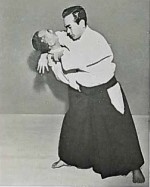
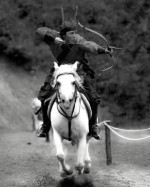
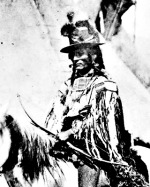
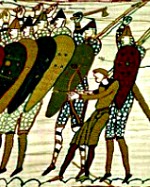
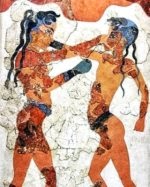

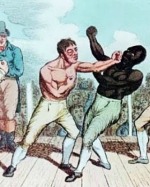

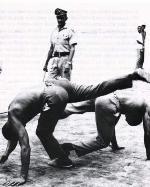
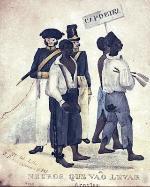
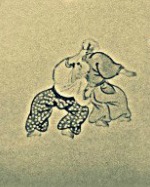
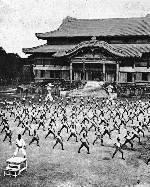
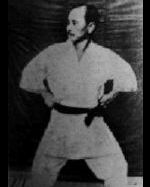
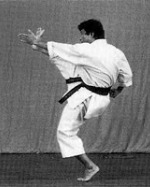
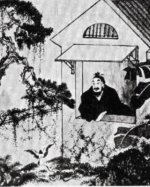
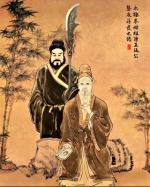
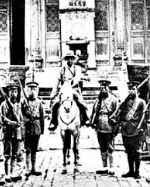
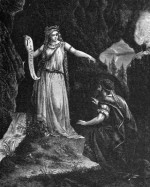
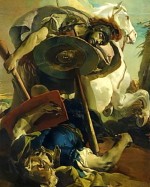

.jpg?timestamp=1658751388939)

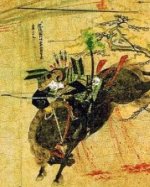
 thumb.jpg?timestamp=1658751895643)
